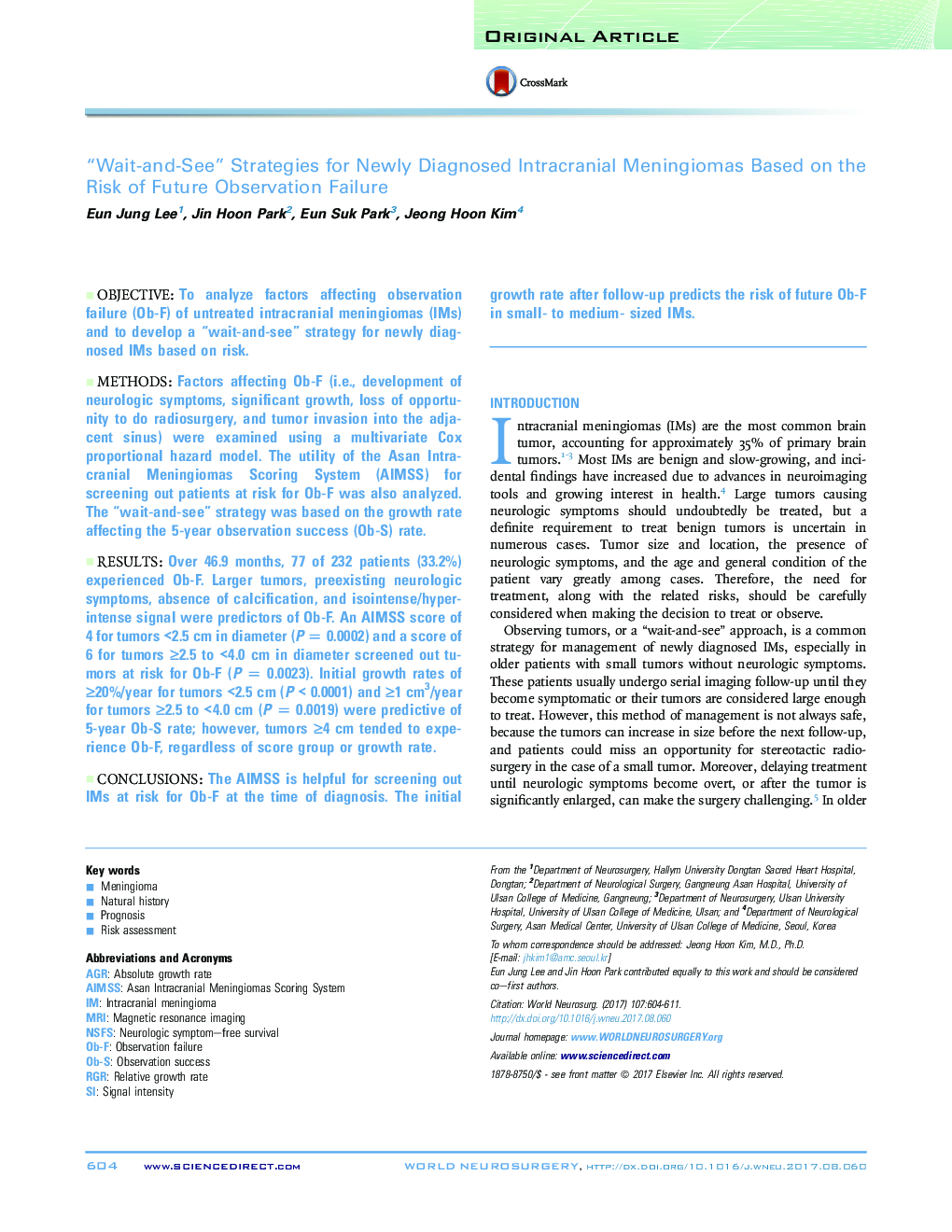| Article ID | Journal | Published Year | Pages | File Type |
|---|---|---|---|---|
| 5633925 | World Neurosurgery | 2017 | 8 Pages |
ObjectiveTo analyze factors affecting observation failure (Ob-F) of untreated intracranial meningiomas (IMs) and to develop a “wait-and-see” strategy for newly diagnosed IMs based on risk.MethodsFactors affecting Ob-F (i.e., development of neurologic symptoms, significant growth, loss of opportunity to do radiosurgery, and tumor invasion into the adjacent sinus) were examined using a multivariate Cox proportional hazard model. The utility of the Asan Intracranial Meningiomas Scoring System (AIMSS) for screening out patients at risk for Ob-F was also analyzed. The “wait-and-see” strategy was based on the growth rate affecting the 5-year observation success (Ob-S) rate.ResultsOver 46.9 months, 77 of 232 patients (33.2%) experienced Ob-F. Larger tumors, preexisting neurologic symptoms, absence of calcification, and isointense/hyperintense signal were predictors of Ob-F. An AIMSS score of 4 for tumors <2.5 cm in diameter (P = 0.0002) and a score of 6 for tumors â¥2.5 to <4.0 cm in diameter screened out tumors at risk for Ob-F (P = 0.0023). Initial growth rates of â¥20%/year for tumors <2.5 cm (P < 0.0001) and â¥1 cm3/year for tumors â¥2.5 to <4.0 cm (P = 0.0019) were predictive of 5-year Ob-S rate; however, tumors â¥4 cm tended to experience Ob-F, regardless of score group or growth rate.ConclusionsThe AIMSS is helpful for screening out IMs at risk for Ob-F at the time of diagnosis. The initial growth rate after follow-up predicts the risk of future Ob-F in small- to medium- sized IMs.
